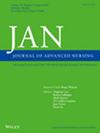Identifying Trends in the Most Cited Nursing Articles: Research Topics, Author Gender Representation and Characteristics Correlated With Citation Counts
Abstract
Aim
To assess the top 1000 cited nursing articles in terms of their impact, conceptual and social characteristics.
Design
Bibliometric literature review design.
Methods
A bibliometric analysis on the 1000 most cited nursing articles in English, focusing on assessing their impact and prevalent terms, keywords, co-occurrence networks and topic trends. Non-parametric statistical tests were used.
Data Sources
Web of Science Core Collection (accessed 14 February 2024).
Results
The 1000 most cited articles were exported from 201,310 eligible articles.
The most cited articles received a total of 319,643 citations. The Journal of Advanced Nursing and the International Journal of Nursing Studies were the most cited journals. Literature reviews accounted for 21% of the most cited articles, compared to only 7% of all eligible articles. Most first authors were female, 63%. The data showed an increase in female first authorship among the most cited articles over time. This may reflect a shift towards greater gender equity in nursing research. Shorter article titles and fewer article pages were associated with more citations.
Conclusion
Methodological and conceptual articles received the most citations, likely due to their broad applicability (e.g., across disciplines) and enduring relevance. There was a statistically significant correlation between article brevity and citation count, but the relationship should be viewed with caution given the small effect size.
Implications for the Profession
Bibliometrics is important for evidence-based practice because it helps nurses evaluate journals, articles and research topics. Since citation counts do not always indicate research quality, nurses and nursing students would benefit from training in bibliometrics to enhance their critical thinking in this area.
Impact
Top-cited nursing articles indicate influential research topics and methods. They also influence authors' academic career opportunities, allowing assessment of research equity in terms of dominant countries and author gender representation.
Reporting Method
The Preferred Reporting Items for Bibliometric Analysis (PRIBA) guidelines.
Patient or Public Contribution
No Patient or Public Contribution.


 求助内容:
求助内容: 应助结果提醒方式:
应助结果提醒方式:


